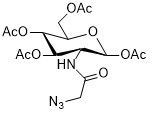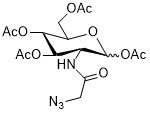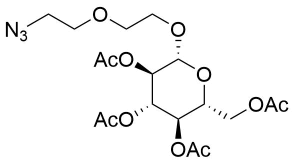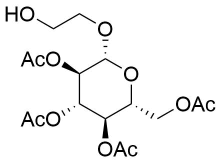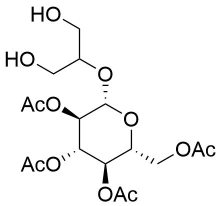Sugar PEG and β-Glucuronide linkers offer effective solutions for bioconjugation, drug delivery, and diagnostics. Sugar PEG linkers enhance water solubility and target specific receptors, while supporting immunosuppression in biomolecule design. Meanwhile, β-Glucuronide linkers stabilize ADCs in the bloodstream and enable selective drug release inside cells, thanks to β-glucuronidase activity. Together, they provide versatile tools for targeted therapies and research.
Sugar PEG β-Glucuronide Linker
Sugar PEG and Sugar Linkers
Sugar PEG linkers combine sugar moieties with a PEG backbone, enhancing water solubility and targeting capabilities. They play a key role in bioconjugation, drug delivery, and diagnostics. These linkers improve cellular uptake through interactions with specific receptors and can also support immunosuppression in biomolecule design. AxisPharm offers high-purity Sugar PEG reagents with active groups like azide and bromide for diverse uses.β-Glucuronide Linkers
β-Glucuronide linkers are popular in creating Antibody-Drug Conjugates (ADCs). They pair well with different drug classes, such as auristatins, camptothecin, doxorubicin analogues, CBI minor-groove binders, and psymberin. The β-glucuronide bond cleaves easily by the lysosomal enzyme β-glucuronidase (GUSB), releasing active drugs inside cells. Because GUSB is abundant in lysosomes and often overexpressed in tumors, ADCs with these linkers stay stable in the bloodstream but activate within cells.Key Features
- Hydrophilic Nature: β-Glucuronide’s hydrophilicity helps prevent ADC aggregation, especially with hydrophobic drugs.
- Targeted Drug Delivery: Sugar PEG linkers bind to carbohydrate-binding proteins or specific receptors, improving targeting.
- Immunosuppressive Effects: Sugar components in PEG linkers support immunosuppression in biomolecule design.
- Versatile Functional Groups: Available in forms like azide and bromide for flexible conjugation.
Applications
- ADCs: β-Glucuronide linkers keep ADCs stable in the blood, releasing drugs inside tumor cells.
- Bioconjugation: Sugar PEG linkers attach sugars to proteins, peptides, or other bioactive compounds.
- Surface Modification: Sugar linkers improve biocompatibility when coating surfaces.
- Diagnostics and Imaging: Useful for probes that detect carbohydrate-binding sites.
Advantages
- Stability and Selective Release: β-Glucuronide linkers ensure drugs release only within cells, guided by GUSB.
- Reduced Aggregation: Their hydrophilicity helps prevent ADCs from clumping.
- Enhanced Biocompatibility: Sugar moieties in PEG linkers boost compatibility and reduce immune response.




